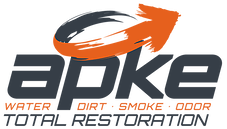The kitchen serves as the heart of your home, where families gather to cook, eat, and create memories. Unfortunately, it’s also one of the most vulnerable areas for water damage due to the concentration of plumbing fixtures, appliances, and daily water usage. Understanding the most common causes of kitchen water damage and implementing preventive measures can save you thousands of dollars in repairs and protect your home from extensive structural damage.
1. Dishwasher Malfunctions and Leaks
Dishwashers are among the leading culprits of kitchen water damage, with problems ranging from minor leaks to catastrophic floods. The average dishwasher uses between 4-6 gallons of water per cycle, and when something goes wrong, that water needs somewhere to go.
Common dishwasher issues include:
- Worn door seals that allow water to seep onto floors
- Clogged drainage systems causing water backup
- Faulty water supply line connections
- Damaged internal hoses or pumps
- Overloading that prevents proper sealing
Prevention strategies: Inspect your dishwasher door seals monthly for cracks, warping, or food debris buildup. Clean the filter regularly according to manufacturer instructions, typically every 2-3 months. Check the area around your dishwasher for signs of moisture or water stains, and ensure proper loading to prevent spray arm blockages. Schedule professional maintenance annually to identify potential problems before they become costly disasters.
2. Sink and Faucet Problems
Kitchen sinks endure constant use, making them susceptible to various water damage scenarios. From dripping faucets to catastrophic pipe failures, sink-related issues account for a significant portion of kitchen water damage claims.
Primary sink-related concerns:
- Loose or damaged faucet connections
- Worn-out sink basin seals
- Garbage disposal leaks and overflows
- Under-sink pipe corrosion or joint failures
- Clogged drains causing overflow
Prevention strategies: Regularly inspect under-sink areas for signs of moisture, rust, or mineral deposits that indicate slow leaks. Tighten loose connections promptly and replace worn washers or gaskets. Avoid putting grease, coffee grounds, or fibrous materials down the disposal, and run cold water during and after use. Consider upgrading old galvanized pipes to modern materials if your home is over 20 years old, as these are prone to corrosion and sudden failure.
3. Refrigerator Water Line and Ice Maker Issues
Modern refrigerators with built-in water dispensers and ice makers require dedicated water lines that can develop problems over time. These appliances often sit against walls where leaks can go unnoticed for extended periods, leading to significant damage.
Refrigerator water damage sources:
- Cracked or kinked water supply lines
- Loose connection fittings
- Clogged or frozen water lines
- Defrost drain blockages
- Door seal failures allowing condensation buildup
Prevention strategies: Inspect the water line behind your refrigerator every six months, looking for signs of wear, kinking, or moisture. Replace plastic water lines with braided stainless steel options for increased durability. Clean the defrost drain annually using a mixture of warm water and mild detergent. Monitor ice production patterns, as decreased output often indicates developing problems. Ensure adequate ventilation around the refrigerator to prevent excessive condensation.
4. Pipe Bursts and Supply Line Failures
Kitchen water supply lines face constant pressure and temperature fluctuations, making them vulnerable to sudden failures. When these pipes burst, they can release hundreds of gallons of water in a short time, causing devastating damage.
Common pipe failure causes:
- Freezing temperatures causing expansion and cracking
- Age-related deterioration and corrosion
- High water pressure exceeding pipe ratings
- Poor installation or substandard materials
- Tree root intrusion in outdoor supply lines
Prevention strategies: Maintain consistent indoor temperatures during winter months, especially in areas where pipes run through exterior walls or unheated spaces. Install water pressure regulators if your home’s pressure exceeds 80 PSI. Insulate pipes in vulnerable areas and consider smart water leak detectors that can alert you to problems immediately. Replace old galvanized or polybutylene pipes with modern PEX or copper alternatives, and have a licensed plumber inspect your system every few years.
5. Appliance Overflow and User Error
Human error and appliance misuse contribute significantly to kitchen water damage incidents. Overflowing sinks, forgotten faucets, and improper appliance operation can quickly turn minor inconveniences into major disasters.
Common overflow scenarios:
- Leaving faucets running while multitasking
- Overfilling pots on the stove
- Blocked sink drains during heavy use
- Improper garbage disposal operation
- Spilled liquids near electrical outlets
Prevention strategies: Develop mindful kitchen habits by staying present during water-related tasks. Install sink overflow drains if your current sink lacks this feature. Keep towels readily available for immediate cleanup of spills. Never leave running water unattended, even briefly. Educate all household members on proper appliance operation and emergency water shutoff procedures.
Creating a Water Damage Prevention Plan
Beyond addressing these five primary causes, implementing a comprehensive prevention plan protects your kitchen investment. Install water leak detection devices near major appliances and under sinks. Know the location of your main water shutoff valve and ensure all family members can operate it quickly. Maintain homeowner’s insurance that adequately covers water damage, understanding policy limitations and exclusions.
Regular maintenance schedules prevent small problems from becoming major disasters. Create monthly inspection checklists covering all water-using appliances and fixtures. Document serial numbers and warranty information for quick reference during emergencies. Establish relationships with qualified plumbers and water damage restoration professionals before you need them.
When Prevention Isn’t Enough
Despite best prevention efforts, water damage can still occur. When it does, immediate action minimizes long-term consequences. Turn off water supply immediately, remove standing water quickly, and contact professional restoration services within 24-48 hours to prevent mold growth and structural damage.
Your kitchen represents a significant investment in your home’s value and your family’s daily life. By understanding these five common water damage causes and implementing proactive prevention strategies, you protect both your property and peace of mind. Regular attention to maintenance details and prompt professional intervention when problems arise ensure your kitchen remains the welcoming heart of your home for years to come.
